Five Hoysala temples not in the tourist circuit
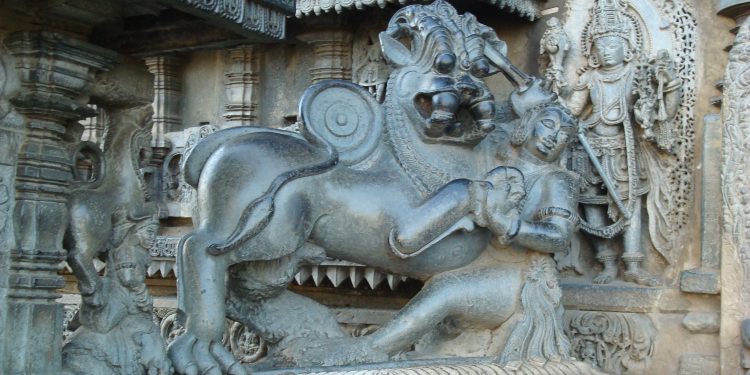
“Hoy Sala ” ( Strike Sala ! ) said the guru Sudatta Muni to his student , Sala who was in an armed combat with a tiger. The beast had just attacked the duo who were immersed in rituals at a Durga or Vasantha Parameshwari temple in a village called Sasakapura or Sosevur. The student struck the animal in one blow, immortalizing himself and his victim. The guru was so pleased that he asked Sala to establish a kingdom and the Hoysala dynasty was established with Sosevur as the capital, which later came to be called Angadi apparently. The Hoysalas ruled for centuries but all that they have left behind is the iconic Hoysala temple architecture in their shrines.
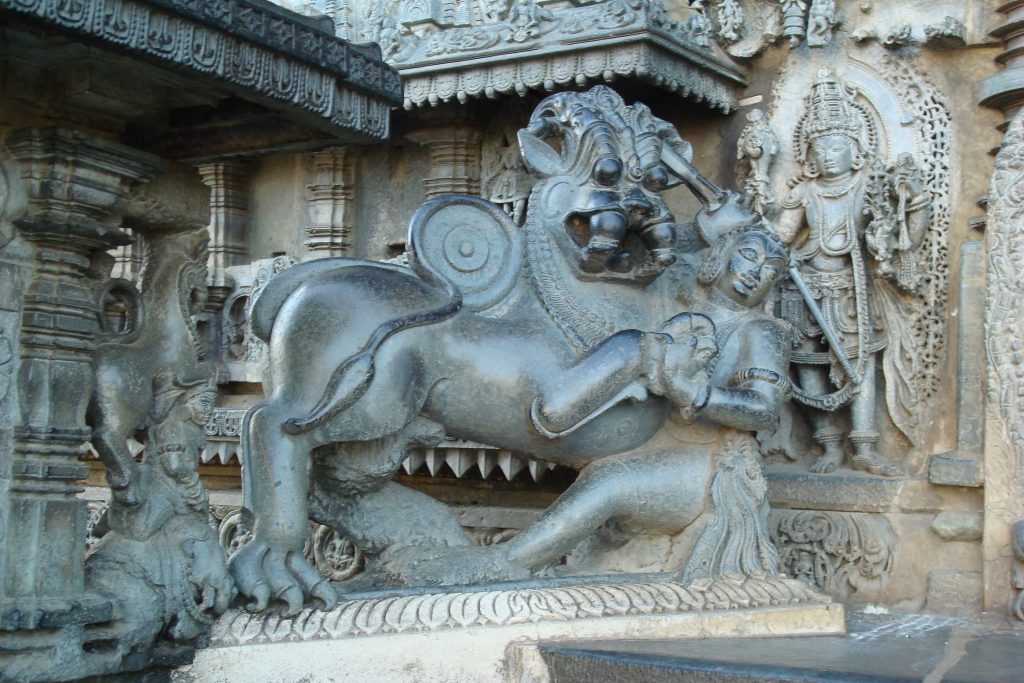
We are a country that loves stories. There are tales for everything – from deities to devils, from demigods to mortals. You will often hear this Sala story if you are in Malenadu in Karnataka. Almost every Hoysala temple has this tale carved in stone, making it a royal emblem. The dynasty which ruled Karnataka for over 400 years is known more for its temples than its battles. It is believed that they built over 1500 shrines, of which more than 400 have been discovered today. But only three of these have made it to the tourist map – Belur, Halebeedu, and Somnathpur and are known for their magnificent Hoysala temple architecture. My journeys have taken me to barely 30 of them, of which I would now recommend about five temples that are off the tourist circuit.

1.Angadi
When a dynasty owes its origins to a myth; one has to see the place where the story was set. It is believed that Sala’s Sosevur is Angadi, a small hamlet in the Chikmagalur district in Karnataka. Deep inside coffee plantations lies the temple of the Goddess, along with the ruins of more temples and Jain basadis. The priest will narrate the story and show you the temple where Sala killed the tiger. Although historians dismiss the myth, they do believe that the basadis here are the earliest of the monuments built by the Hoysalas. Small mud roads take you uphill into the dense coffee plantations. As you follow the roads, you will reach a rugged path that takes you to the basadis. Another path leads you to the three temples, which were completely in ruins when I chanced upon them. They are the Chennakesava, along with Patalarudreshwara and Mallikarjuna temples. Surrounding you are verdant plantations and all that you can hear is the chirping of birds around you, with hardly a soul around.
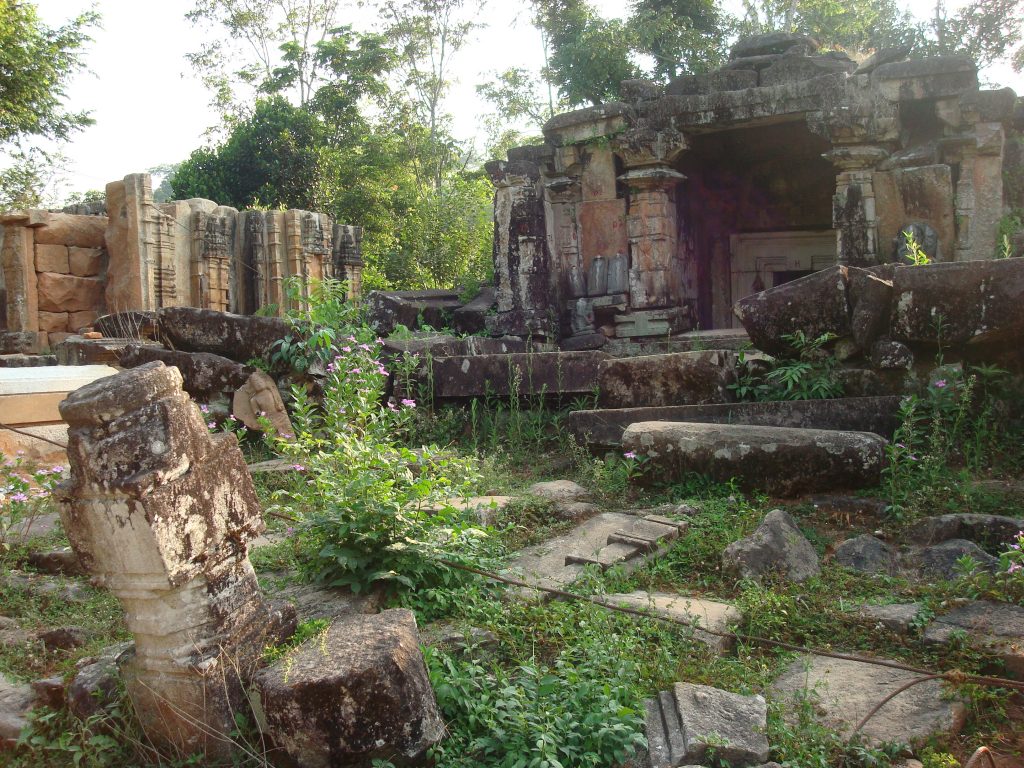
2.Doddagaddavalli
On the route to Belur from Hassan lies a small green board that says “ Doddagaddavalli”. Follow the arrow and drive through the detour and you will see lush fields and coconut trees all along the way. As the eyes get blinded by the greenery, you see the first glimpse of this beautiful 12th-century temple, built by a merchant, with a lake in the background and fields all around it. A quaint hamlet with a handful of houses interrupts you, as you finally land right on the doorstep of the temple. It is a Lakshmi temple with shrines dedicated to Kaali, Shiva, and Vishnu and the only Hoysala temple with four towers or Vimana. A serene lake completes this picture-perfect monument as you look up to see the Hoysala crest basking in the sun. The Lakshmi temple is a magnificent representation of the Hoysala temple architecture and it is one of my personal favourites as well.
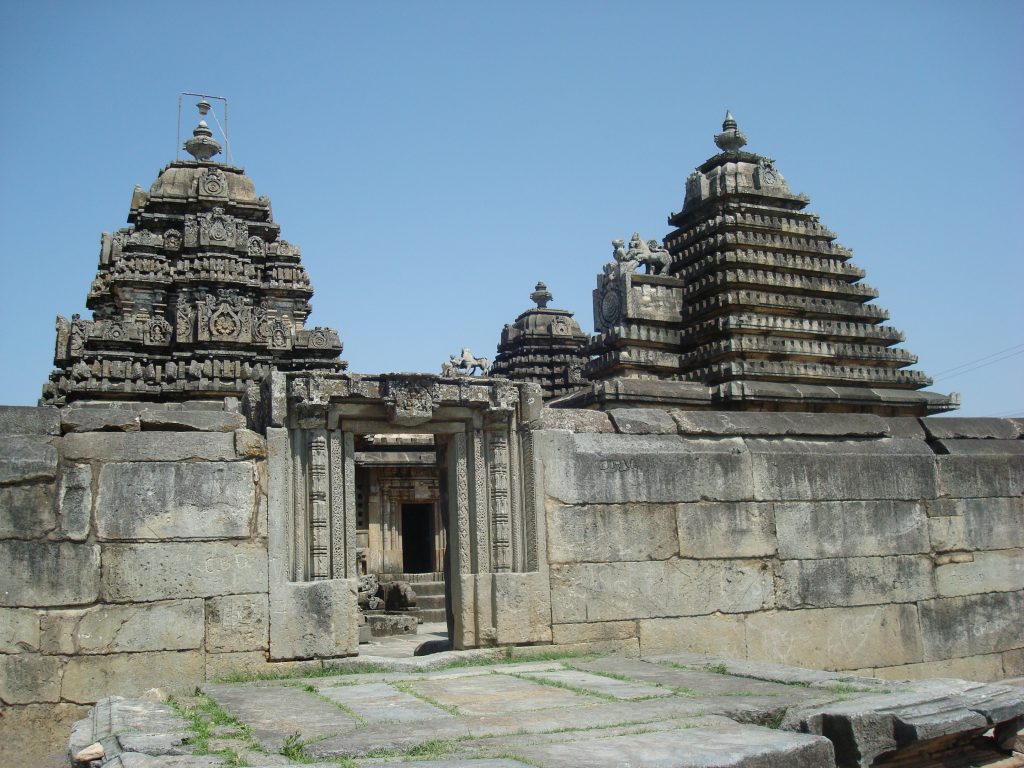
3.Hulikere
Hulikere is not a temple, but the only Kalyani or stepwell that I have seen of the Hoysala monuments and is a beautiful example of Hoysala art and architecture. Located barely a few kilometers from the Hoysaleshwar temple in Halebeedu, there are several shrines along the stepwell. The Pushpagiri hill looks down on this small dusty hamlet and Hulikere often becomes the playground for the village kids who head here to play “This is Queen Shantala Devi ‘s private pond,” says the watchman, adding that it is called Hulikere because the security arranged by the king for his queen was so secure that even a tiger could not walk around. So much for names and myths!
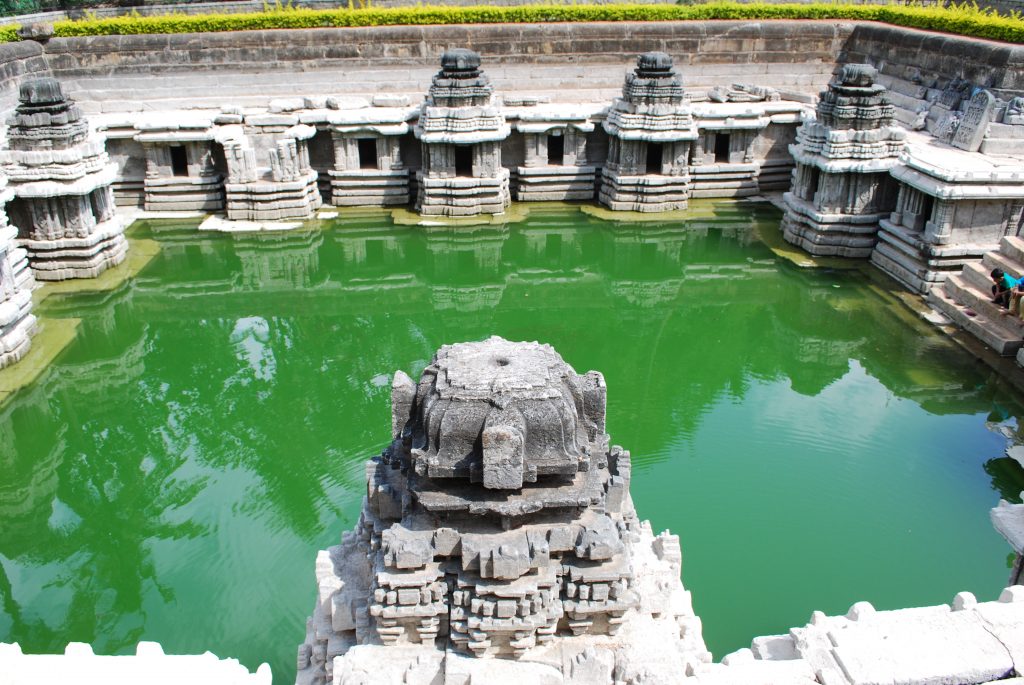
4.Koravangala
Three brothers competed with each other to build the most beautiful Hoysala temple right here in Koravangala, near Hassan. But all that we saw was a 12th-century Dwikuta or a temple with two Vimanas or towers dedicated to Shiva called Bucceswara. It was built by a wealthy officer Bucci who built it after he won the war against the Cholas, although he lost his sons in the battle. The inscriptions here say that Bucci vied with his brothers Govinda and Naka, whose temples lie absolutely in ruins beside a dry lake bed. The temple here is another example of the breathtaking Hoysala temple architecture that continues to inspires us.
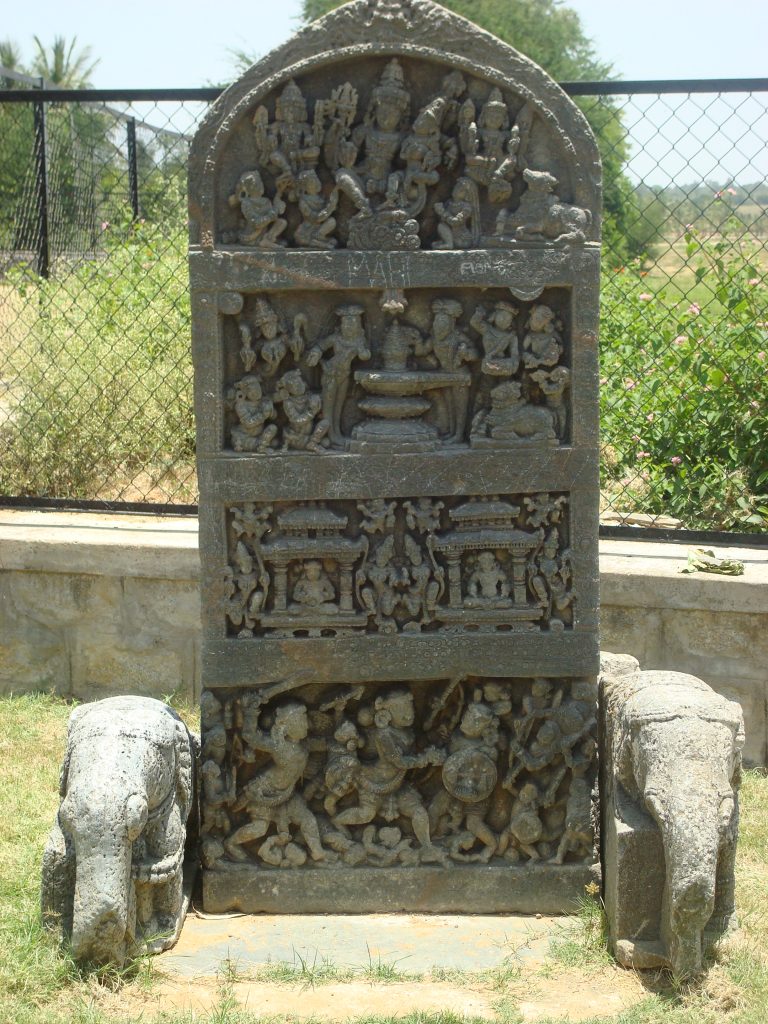
5,Marle
Twin temples dedicated to Keshava and Siddeshwara lie in a quiet remote village called Marle in Chikmagalur district. The village spoke of the tribal chieftain Poysala Muruga, one of the earliest founders of the dynasty. Yet today you barely see a soul around you as you walk along dry fields and patches of land to see the temples virtually lost to the sky and earth. The two of them lie side by side , adorned by some flowers that a local priest from the neighbourhood had worshipped them with. The twin temples here is another unusual display of Hoysala art and architecture. Mosale near Hassan is another example where they built twin temples and they give you a fascinating study of Hoysala temple architecture as well.
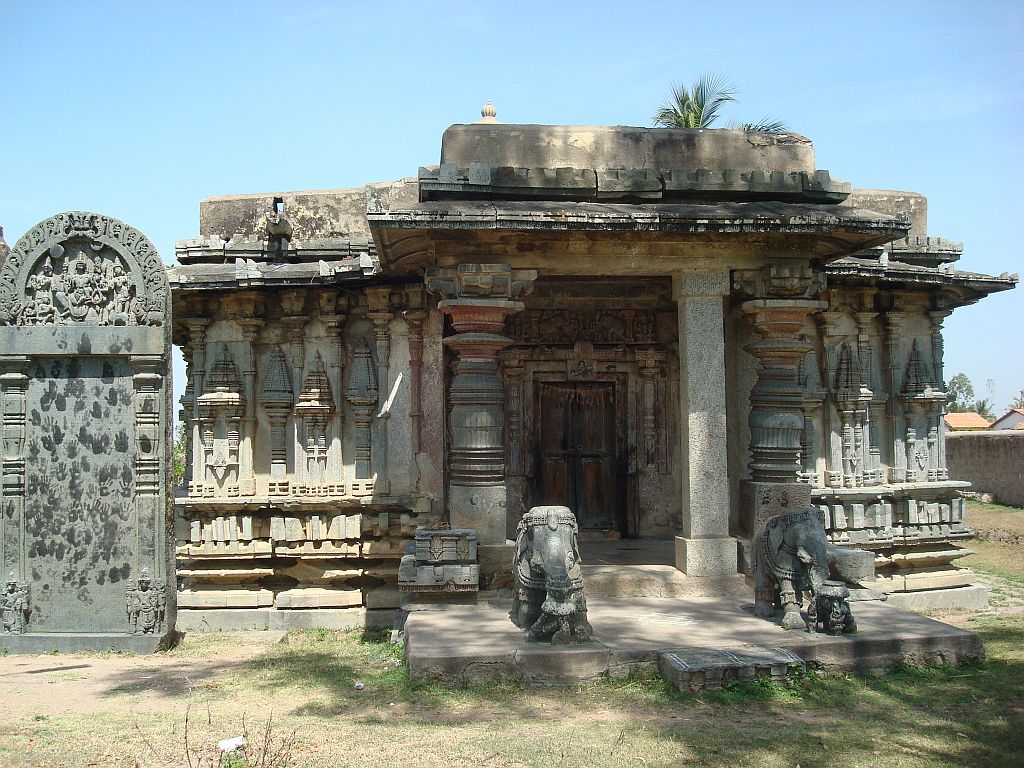
There are several shrines and each one has a story to tell you. Perhaps that is what draws me to ancient monuments – be it temples or forts as they give a glimpse of the historic past but it is up to you to imagine the rest. The Hoysala art and architecture is extremely fascinating as every part of the temple – be it the pillar or the ceiling is nothing but poetry in stone. The friezes tell a story of their own as well. If you are interested in knowing more about Hoysala temple architecture, then you must travel deep inside rustic Karnataka . Have you been to a temple that you would include as an example of Hoysala temple architecture?
